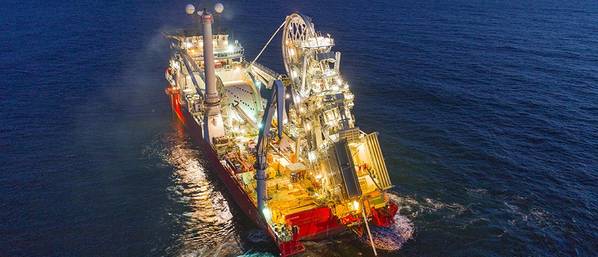
Offshore installation contractor Subsea 7 expects its 2021 results to be adversely impacted by costs associated with the Covid-19 pandemic, including more contagious, new variants of the virus.
Despite this, the company expects that revenue in 2021 will exceed the 2020 revenue level, predominantly driven by greater activity in renewables, as well as in subsea and conventional, due to the rephasing of some work from 2020 into 2021.
Subsea 7 on Thursday posted a net loss of $103 million for the fourth quarter of 2020, on revenues of slightly above $1 billion.
For comparison, in the fourth quarter of 2019, Subsea 7 had reported a net loss of 129 million, on revenue of 889 million.
Fourth-quarter revenue increased 14% compared to the prior-year period due to higher activity in Renewables and Heavy Lifting, partially offset by reduced activity in SURF and conventional.
The company said that Renewables and Heavy Lifting business benefitted from progress on the Seagreen offshore wind farm project as well as standby revenue relating to vessels in Taiwan. The decrease in SURF and Conventional revenue was mainly due to lower Conventional activity in West Africa and the Middle East, the company said.
For the full year, the net loss was $1.1 billion, on a revenue of $3,46 billion.
The company’s backlog for the year rose to $6.2 billion, up 20% year-on-year, of which 32% in Renewables, with $4.0 billion expected to be executed in 2021, Subsea 7 said.
John Evans, Chief Executive Officer: “Although we incurred net costs of approximately $70 million associated with the Covid-19 pandemic and restructuring charges of $86 million, Subsea 7 generated Adjusted EBITDA of $337 million in 2020, equating to a margin of approximately 10%. Despite the uncertain environment, we experienced no contract cancellations.
“Instead, Subsea 7's backlog of work grew by 20% to $6.2 billion a result of a strong presence in the growing offshore renewables market and our focus on parts of the oil and gas market with advantaged economics.”
Overall, utilization of Subsea 7's active fleet was 82% in the fourth quarter, compared to 71% in the prior-year period, driven by high utilization of Life of Field vessels and the PLSVs in Brazil. At 31 December 2020, the active fleet comprised 30 vessels.
Looking ahead, within the oil and gas space, Subsea 7 said Norway, Gulf of Mexico and Brazil were areas with increased activity, adding that it expected some projects in Australia, Ghana, and Mozambique, where it had been selected as preferred supplier, to be awarded in 2021, too.
It said: "Regions with greater activity include Norway, where fiscal incentives have stimulated an increase in early-stage engineering activity, the Gulf of Mexico, predominantly focused on low-cost tiebacks, and Brazil, where the large, pre-salt fields have low oil price break-evens that continue to attract capital. In addition, Subsea 7 has been selected as preferred supplier for several projects, including Bacalhau [Brazil], Scarborough [Australia], Pecan [Ghana] and Rovuma [Mozambique] and we are optimistic that some of these will progress to award during the year."
When it comes to the renewables segment - so, offshore wind - the tendering is active for projects to be awarded in Asia, Europe, and the U.S.
Subsea 7 said: "Tendering in Renewables remains active for projects expected to be awarded to the industry in nine to twelve months’ time, including in Asia, Europe, and the US. While the market for wind turbine installation work remains competitive, Subsea 7 continues to differentiate itself through its integrated and EPCI contract offerings, leveraging a strong track record in the management of large, complex projects across the globe."
$500 million loan
In a separate statement on Thursday, Subsea 7 said it had entered into a $500 million five-year amortising loan facility backed by a $400 million guarantee from UK Export Finance.
Subsea 7 has a two-year availability period during which to draw on the facility, and the facility has a five-year tenor which starts at the end of the availability period or when the facility is fully drawn, if earlier.
The loan can be used for general corporate purposes, including to provide working capital financing for services provided from the UK.
Subsea 7’s CEO said:"This flexible $500 million loan facility diversifies our sources of liquidity and supports our strategy of proactive participation in the energy transition.”



